“WooCommerce vs PrestaShop comparison: Which one is better?” is a tough question, especially when you realize that the decision you make would profoundly affect your future business. To answer this question, this article will help you cover:
- Detailed comparison of WooCommerce vs PrestaShop
- Which eCommerce solution is better for your business?
Seamlessly Migrate Your Store to Another Platform
Our team of experts can safely transfer your business data, products, customers, and orders to unlock more growth in another eCommerce platform. Let us provide a customized migration for you!
WooCommerce vs PrestaShop – Which Is Better?
WooCommerce is known as a flexible, open-source eCommerce plugin built into WordPress. Since its release in 2011, it has quickly become the primary solution for users looking for a platform to run their online store. With its open-source approach, you can tailor every part of your store, crafting unique designs and features effortlessly.
On another note, PrestaShop is an immensely feature-rich, open-source eCommerce solution and officially started in 2007. Over time, it’s become the go-to choice for many eCommerce store owners, boasting robust administrative tools, diverse design options, and a remarkably user-friendly interface.
[wptb id=68323]
1. Popularity
Quick verdict: WooCommerce is definitely more popular than PrestaShop!
It can be seen that WooCommerce is superior to PrestaShop in terms of popularity. With over 6 million websites using WooCommerce, it is one of the most used eCommerce platforms in the world. In contrast, PrestaShop is the home to more than 230,000 websites.
WooCommerce leads in key markets like the US, UK, and Iran, while PrestaShop’s user base is more concentrated in France and Spain, where it originated. Without a doubt, WooCommerce has proven more appealing to merchants worldwide.
What’s more, for the WooCommerce vs PrestaShop Reddit discussion, eCommerce WooCommerce also receives more compliments for its popularity over PrestaShop.
2. Pricing
Quick verdict: WooCommerce beats PrestaShop down with a cheaper range of operational costs.
Both PrestaShop and WooCommerce are open-source eCommerce solutions; they are free to download and install. However, merchants have to pay some fees to get a live site, such as a domain name (about $12/year) or a hosting provider (from $5 – $25/month).
Besides, to create a powerful and attractive store, you have two options to choose from:
- design themes and create extensions on your own
- or buy themes and plugins from these two platforms’ stores.
The average price of PrestaShop themes and modules in PrestaShop starts at $79/year, which is almost three times more expensive than that in WooCommerce ($20/year).
Our update in late 2023:
In the latter part of 2023, both WooCommerce and PrestaShop introduced a “hosted” version, offering users the convenience of monthly payments for straightforward selling, similar to Shopify or Wix. However, within the scope of WooCommerce vs PrestaShop article, we specifically address the open-source versions of these platforms.
3. Ease of Use
Quick verdict: Both WooCommerce and PrestaShop require users a lot of time and effort during the installation and operation processes. So, the result is a tie.
In terms of installation, the setup time of a WooCommerce store is quite longer than that of PrestaShop because you need to have WordPress first. After that, WooCommerce can be installed directly from the WordPress admin panel. As mentioned above, this plugin is free, so you do not need to pay any fee to install it. All you need to do is:
- Login into your WordPress admin site.
- then go to “Plugins” search for “WooCommerce”.
- and click “Install Now.”
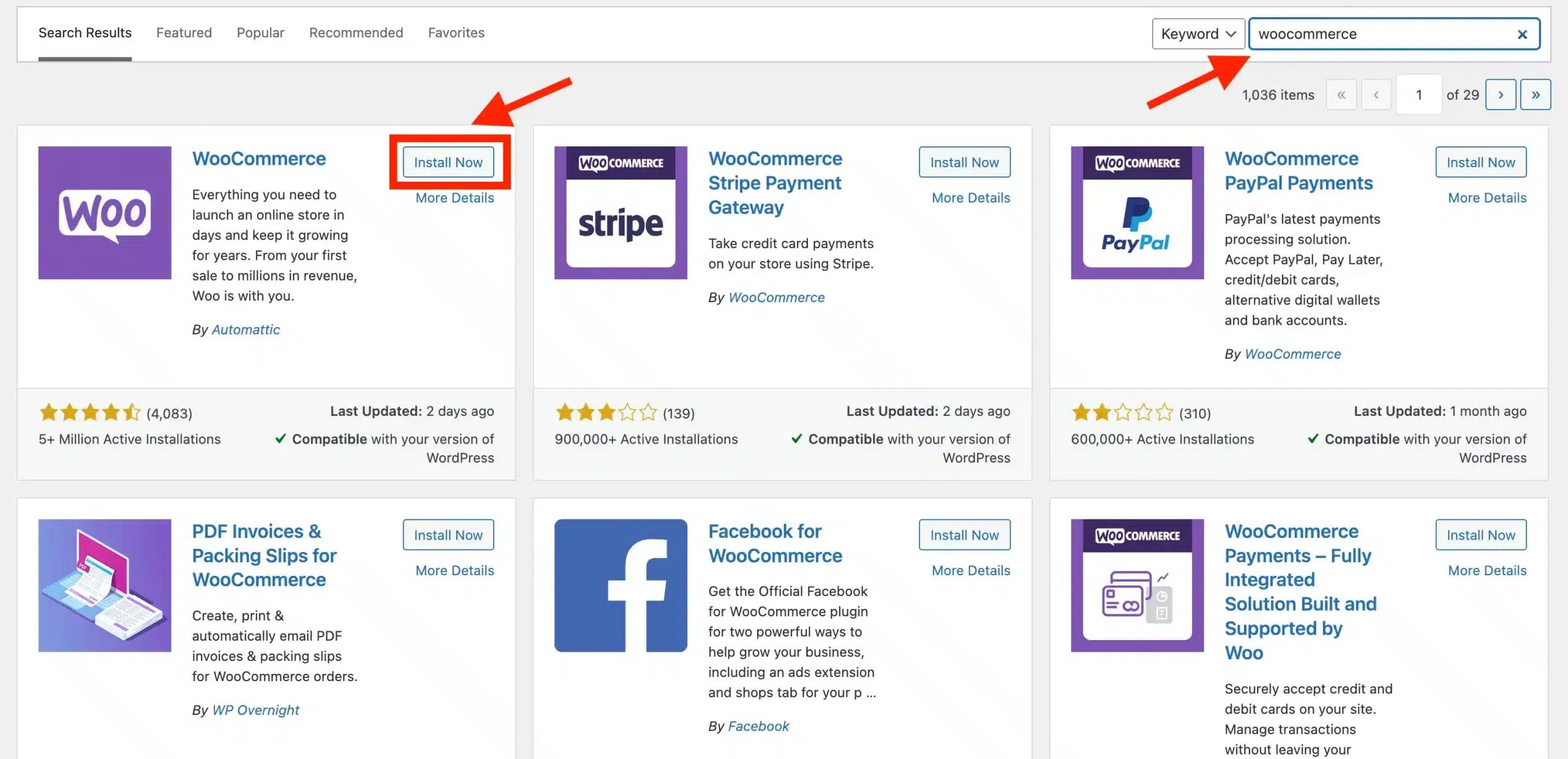
WooCommerce’s interface is user-friendly. All the features needed to manage your online store are on the left of the dashboard, so it’s very easy to navigate anywhere.
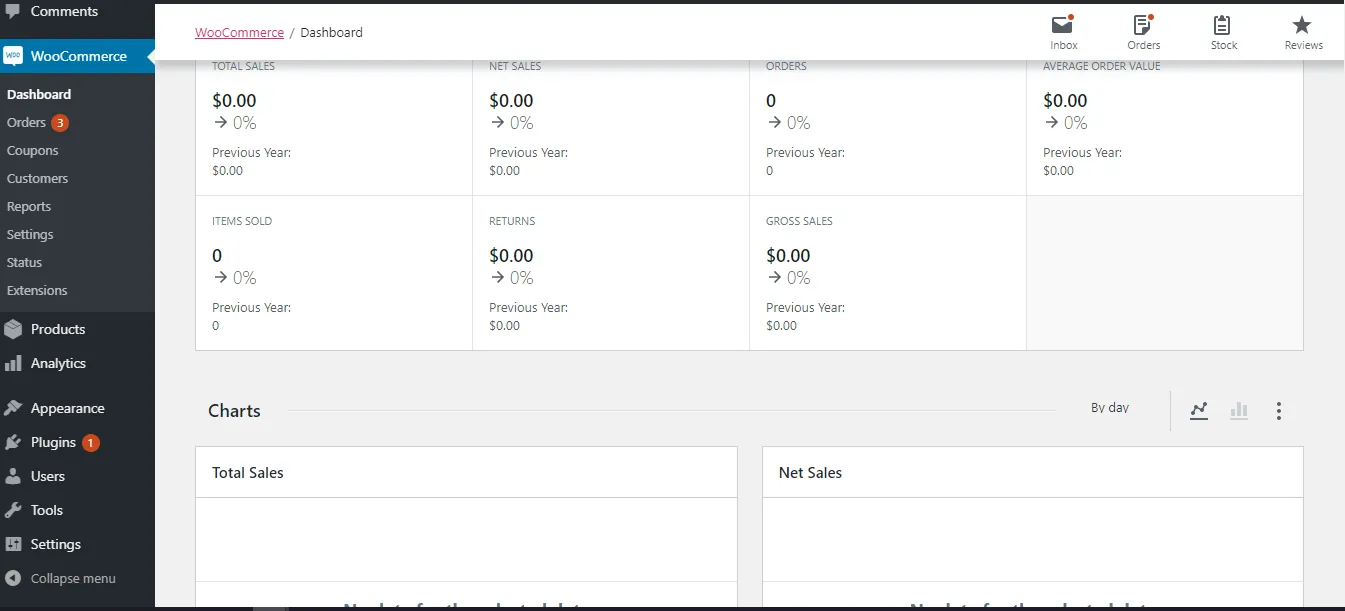
When it comes to platform user-friendliness, a hosted solution like Squarespace is the first to be mentioned. If you’re interested, here is the WooCommerce vs Squarespace comparison for your concerns.
Referring to PrestaShop, there are two ways to install a store, which are One Click Install and Manual Installation. Firstly, merchants can install PrestaShop in 5 minutes if they choose a web hosting provider that provides a one-click installation script (there are 3 popular script libraries to install PrestaShop with one click: SimpleScript, Installation, Softaculous). The second method is more complex than the first one. You will need to:
- Set up server space, a domain name, FTP client, and Text editor.
- Download the latest version of PrestaShop as a zip file.
- Extract zip files and work with them on your web server via the FTP application.
If you are confused by this complicated process, you can follow the platform’s documentation instructions.
After the installation, let’s go to the PrestaShop admin dashboard. The dashboard of PrestaShop is also simple and straightforward for you to find every needed store function.
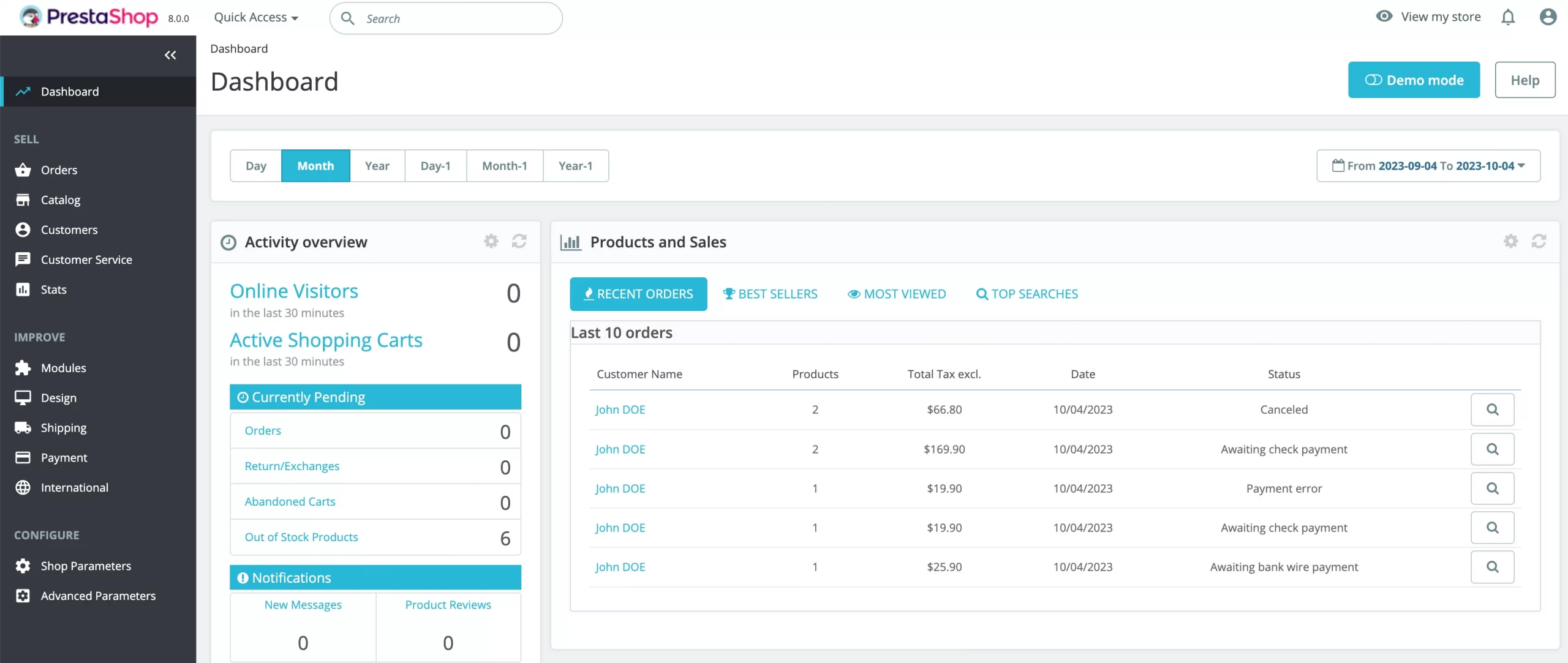
4. eCommerce Functions
Quick verdict: It’s a tie between WooCommerce vs PrestaShop comparison in terms of eCommerce functions.
PrestaShop and WooCommerce are both popular eCommerce platforms that offer robust, full-featured functionality for online stores.
When it comes to product management, both platforms allow merchants to easily create products and manage attributes, variants, and other core product details.
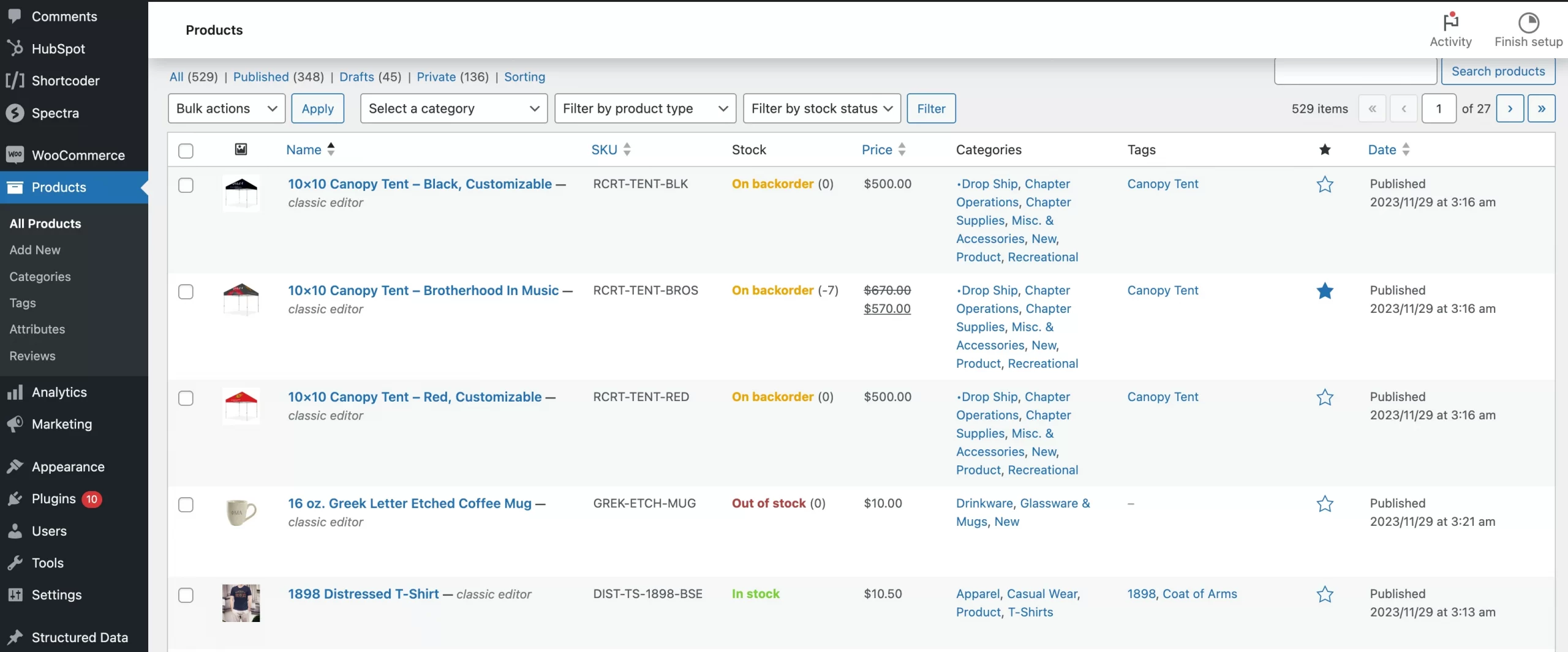
However, PrestaShop provides more flexible out-of-the-box options and controls for attributes compared to WooCommerce.
In terms of catalog organization, both have hierarchical category systems and tagging capabilities. PrestaShop offers additional configurations like manufacturers that allow for more customization.
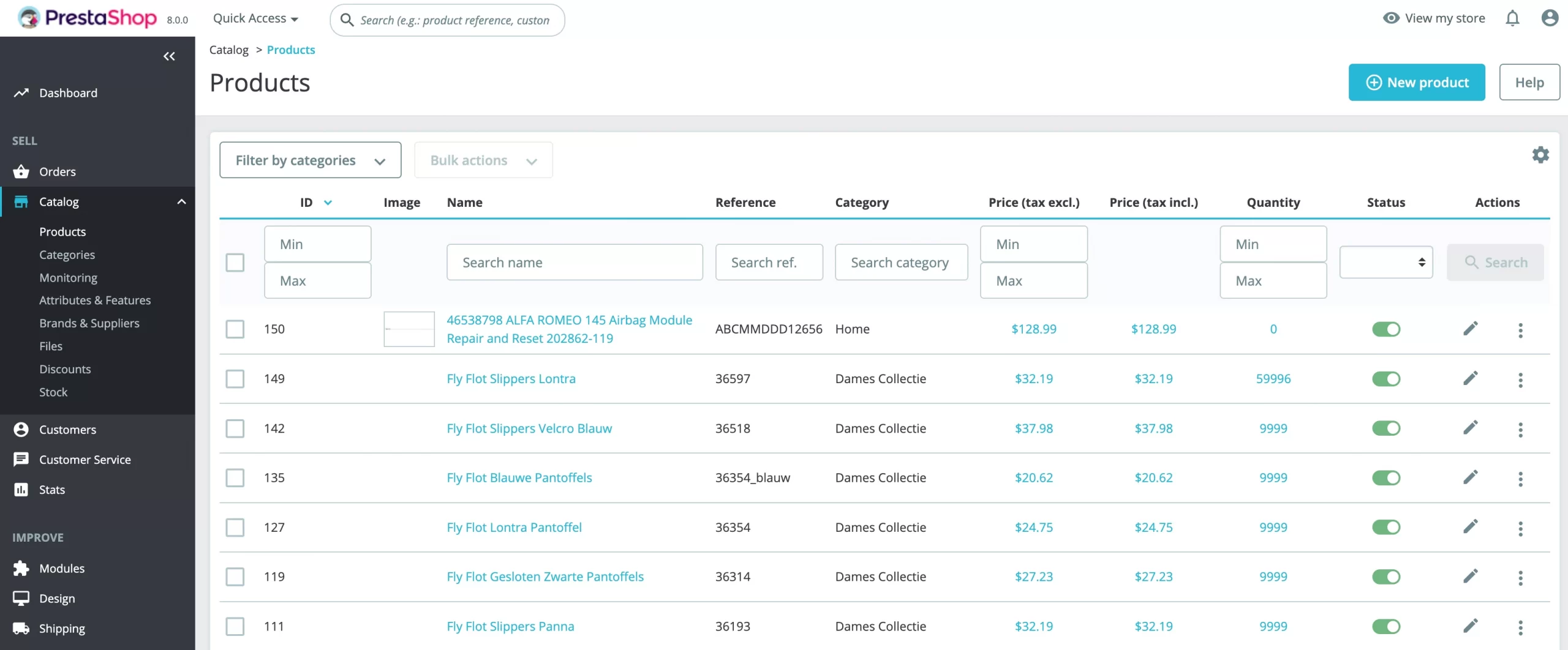
Both platforms also provide standard shopping carts and checkout flows, as well as order management screens to process customer sales. Additionally, while testing, we found that we can implement user accounts to enable customer profiles and order tracking.
There’s only one key difference is that WooCommerce is a WordPress plugin, so merchants also gain access to that platform’s vast library of additional plugins and themes through the WordPress CMS. Meanwhile, PrestaShop has its own integrated CMS.
5. Built-in Features & Plugins
Quick verdict: WooCommerce vs PrestaShop comparison, these two shopping cart solutions provide customers with necessary built-in features, but thanks to the diversity of extensions, WooCommerce is the winner.
In the competition between WooCommerce and PrestaShop, it’s important to mention the built-in features and plugins of the two platforms. Both of them provide some basic built-in features that merchants need to manage their online stores. For example, import and export products, payment processing, order management, a basic analytic/statistic tool, etc.
They also allow the creation of bulk products and the creation of combinations. As a WordPress plugin, WooCommerce seems to be more powerful regarding the management of posts, media, pages, and blogging.
On the other hand, PrestaShop is stronger in creating and managing multiple stores. While this is a built-in feature of this platform, WooCommerce users have to install a plugin to run multiple stores. To improve the performance of your online stores, it’s necessary to add some WooCommerce extensions or modules, such as email marketing, accounting, analytic tools, etc.

Up to now, the WooCommerce plugin store has hosted more than 800 extensions developed by the WooCommerce team or third parties.
Moreover, WooCommerce can be easily integrated with WordPress plugins, which means that WooCommerce users can also take advantage of the huge plugin store of WordPress with approximately 59,000. Meanwhile, the number of modules that PrestaShop Addons offers is significantly lower, at about 4,000 modules.
6. Themes & Templates
The verdict: WooCommerce has a wider range of designs. As a result, WooCommerce is the winner of the WooCommerce vs PrestaShop comparison in this field.
Thanks to their open-source nature, both WooCommerce and PrestaShop allow users endless customization possibilities. Merchants can create and design their stores as they want to, and the better their technical skills, the better their stores’ design and performance. However, users who are not tech-savvy tend to select themes and templates from their platform’s marketplace.
Let’s take a closer look at WooCommerce vs PrestaShop marketplaces to see the differences. WooCommerce themes only offer its store owners 19 themes.

However, users can also take advantage of WordPress themes by accessing Themeforest to select the most suitable one for their online shop with over 48,000 options (both free and paid). The price of WooCommerce paid themes normally starts at $29.99.
On the other hand, Addons – the PrestaShop apps market has over 1,400 themes for users. However, all of them are paid versions and their prices start from $59.99. The LitExtension has made a collection of “Best PrestaShop Themes” to give merchants the best decision in selecting the theme for stores.

With both WooCommerce and PrestaShop themes, merchants can access the code of the themes and then adjust them through Javascript or HTML code.
7. SEO & Marketing
The verdict: WooCommerce would beat PrestaShop in the SEO aspect.
When considering a platform for your online store, SEO is one of the most important factors. With good SEO, your website or products will appear at the top of search results, and this inserts your brand into a customer’s mind.
Firstly, WooCommerce inherits all of WordPress’s available SEO capabilities, especially for blogging. For more specific, users can easily create a blog directly from the WordPress dashboard. In contrast, PrestaShop’s users need to install a blog module whose price is significantly expensive and should be taken into consideration.
Both WooCommerce and PrestaShop equally offer the possibility to optimize the SEO of your site. For example, writing SEO-friendly product titles, adding Product SEO descriptions, URL redirects, generating the sitemap, etc… are available.
Let’s see all the differences below:
[wptb id=68410]
8. Payment Gateways
The verdict: Each platform has its own benefits that can satisfy users’ demands. As a result, there is no winner in this aspect between WooCommerce vs PrestaShop comparison.
Flexibility and diversity of payment gateways can be a great advantage to any online store. The good news is that users of the two platforms can integrate by default with popular gateways like Stripe and PayPal in their stores.
However, let’s take a closer look at PrestaShop vs WooCommerce payment options to see the differences.
WooCommerce offers not only 100+ payment gateways (free and paid plugins) but also its payment gateway, which is free to install. With WooCommerce Payments, you’ll be able to securely accept major credit and debit cards.
With PrestaShop, users can choose between a third-party payment processor from 250 options on the PrestaShop marketplace or PrestaShop Checkout solution. The same as WooCommerce Payments, your customers will not be redirected to another site when processing their payment with PrestaShop Checkout. Moreover, is fully compliant with all regulations, especially GDPR.
9. Multilanguage Support
Quick verdict: PrestaShop gives a clear advantage for strong built-in multilanguage storefronts.
As someone who has set up both PrestaShop and WooCommerce stores, I have found PrestaShop to have a clear advantage when it comes to supporting multiple languages.
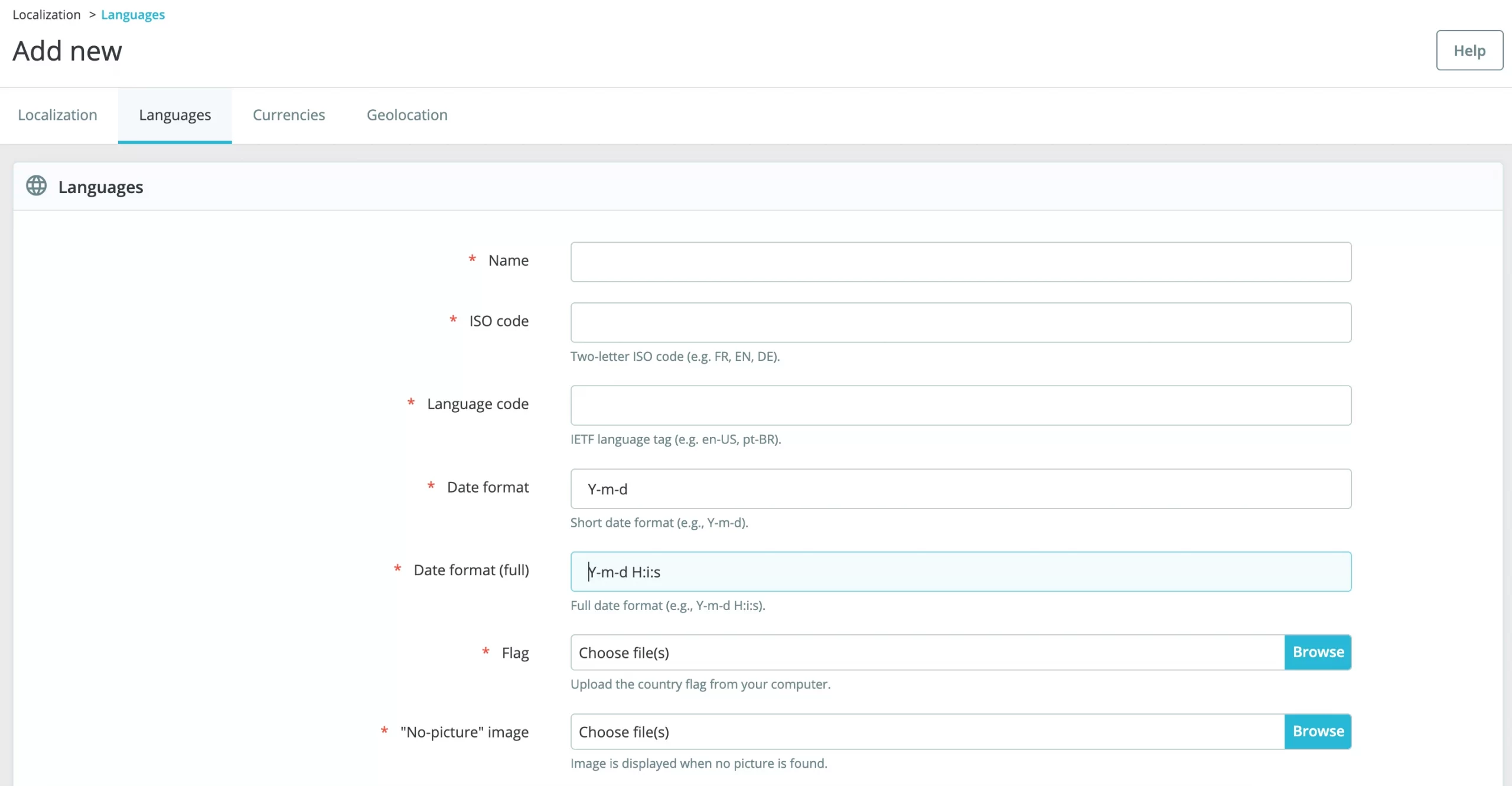
With PrestaShop, I am able to easily create a storefront in various languages right from the initial installation.
I can seamlessly switch between languages using the built-in language switcher and independently translate all of my store content, menus, product descriptions, and more using PrestaShop’s powerful in-built translation tools.
On the other hand, with WooCommerce I need to install additional plugins like WPML or Polylang to add basic multilingual capabilities. I must find suitable widgets to enable language selection and develop a process to upload MO files for translations instead of utilizing streamlined translation panels.
All of this makes the WooCommerce multilanguage setup more involved compared to PrestaShop’s seamless native experience.
10. Security
The verdict: Both platforms are open-source solutions and share similar security issues. However, PrestaShop would surpass WooCommerce thanks to its default PCI compliance. For those who want to ensure data security, you can replatforming from WooCommerce to PrestaShop.
Regarding security, users of WooCommerce and PrestaShop have to ensure data security on their own. For example, they can buy an SSL certificate, choose a reliable eCommerce hosting provider, or always update their store to the latest version.
With WooCommerce, the good news is that this platform allows merchants to create two-factor authentication by installing plugins such as Duo or Two factors. This feature will bring users to a new level of data security.
For example, when merchants want to log in to the admin site, they have to verify the user identity through code in SMS, email, or phone calls. Furthermore, WooCommerce store owners will be responsible for PCI compliance, follow WooCommerce Docs about PCI-DSS Compliance to learn more about details, and how to make a site PCI compliant.
In the case of PrestaShop, its downloadable setup file is already PCI compliance. Because it is a European company, it recommends users be GDPR compliant (General Data Protection Regulation) for data safety purposes.
11. Support
The verdict: PrestaShop is undoubtedly a winner because it has a variety of support options for e-merchants. If you’re a small business, you can consider moving your store from WooCommerce to PrestaShop.
WooCommerce does not offer direct support for users when troubles arise. In fact, merchants can not solve their issues through live chat or phone. Instead, they can seek help from a large community whose members are willing to help.
Besides that, some resources such as FAQs, tutorials, and documentation are also available to guide users and help them deal with problems. Another way that store owners can get help is by opening a support ticket on the WooCommerce website.
Although the WooCommerce support team is stated to respond to questions within 24 hours, the actual time will depend on the complexity of your problems.

On the other hand, PrestaShop offers around 7 plans of support service. It ranges from $54 to $1525, depending on the support level.
Which is the Final Option for Your Business?
Previously, on the WooCommerce vs PrestaShop comparison review, we have gathered all the elements of these two platforms.
The benefits of WooCommerce are undeniable. WooCommerce provides a lot of advantages, powerful built-in features, more plugins, and an ideal SEO environment. If you are already running a WordPress website, do not hesitate to start with WooCommerce. In case your business has a small size coming with small revenue, pick WooCommerce as well due to its affordable prices in extensions and themes.
In contrast, PrestaShop would be more suitable for a bigger scale. Additionally, if you are planning to start an online store in Europe or your customers come from Europe, PrestaShop with GDPR compliance, is an optimal solution.
Besides WooCommerce vs PrestaShop, you may also want to discover:
- PrestaShop vs OpenCart – Which is a better open-source platform?
- PrestaShop vs Magento – Which platform is good for eCommerce?
- Shopify vs WooCommerce – A head-to-head comparison.
WooCommerce vs PrestaShop Comparison – FAQs
[sp_easyaccordion id=”48424″]
Final Words
Determining a suitable platform to start a business is not as straightforward as we generally think. Hopefully, this WooCommerce vs PrestaShop comparison in many aspects will give you the answer that you are looking for.
So, if you are trying to switch from one platform to WooCommerce or to PrestaShop, even from PrestaShop to WooCommerce (or contrast), our team is willing to help. As LitExtension – the #1 Shopping Cart Migration Expert with 280,000+ successful migrations for 100,000+ worldwide customers in the last 12 years, all your data will be transferred with the high accuracy, utmost security level, and quickest speed, especially with no technical skills required. LitExtension also supports migrating from CSV files, database dump, and database direct.
For any further information about LitExtension, please feel free to contact us! You can also join our Facebook Community to get more eCommerce tips and news.